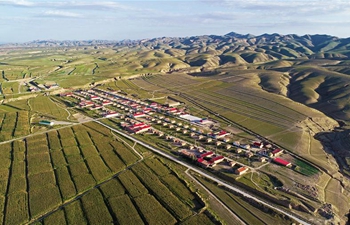SYDNEY, Sept. 18 (Xinhua) -- Our two closest galaxies, the Large and Small Magellanic Clouds, may have once had a third companion which the Large Magellanic Cloud engulfed, Australian astronomers from the International Centre for Radio Astronomy Research (ICRAR) published on Tuesday.
The Large and Small Magellanic Clouds are 160,000 and 200,000 light years respectively from our own Milky Way galaxy, and can be seen at night with the naked eye.
Something that has long puzzled scientists about the Large Magellanic Cloud is that within it, there are clusters of stars that are very young as well as clusters of stars that are very old, with no middle aged stars in between.
"This is known as the 'age-gap' problem," ICRAR masters student Benjamin Armstrong explained.
Normally in galaxies, groups of stars known as star clusters are all of a similar age -- for example in the Milky Way, the star clusters are all very old.
As well as this "age-gap" phenomenon puzzling scientists, the Large Magellanic Cloud held another mystery -- while most of the stars rotate clockwise around its center, some stars travel in the opposite direction.
"For a while, it was thought that these stars might have come from its companion galaxy, the Small Magellanic Cloud," Armstrong said.
However, "our idea was that these stars might have come from a merger with another galaxy in the past."
Armstrong, who is based at the University of Western Australia, used computer modelling to simulate galaxy mergers.
"What we found is that in this sort of merging event, you actually can get quite strong counter-rotation after a merger takes place," he said.
The evidence suggests that at some point around 3 to 5 billion years ago another luminous galaxy was engulfed by the Large Magellanic Cloud to produce the galaxy that exists today.
While Armstrong maintains that the findings are preliminary, along with his colleagues, he said he is happy to provide a new way of looking at a very old problem.













